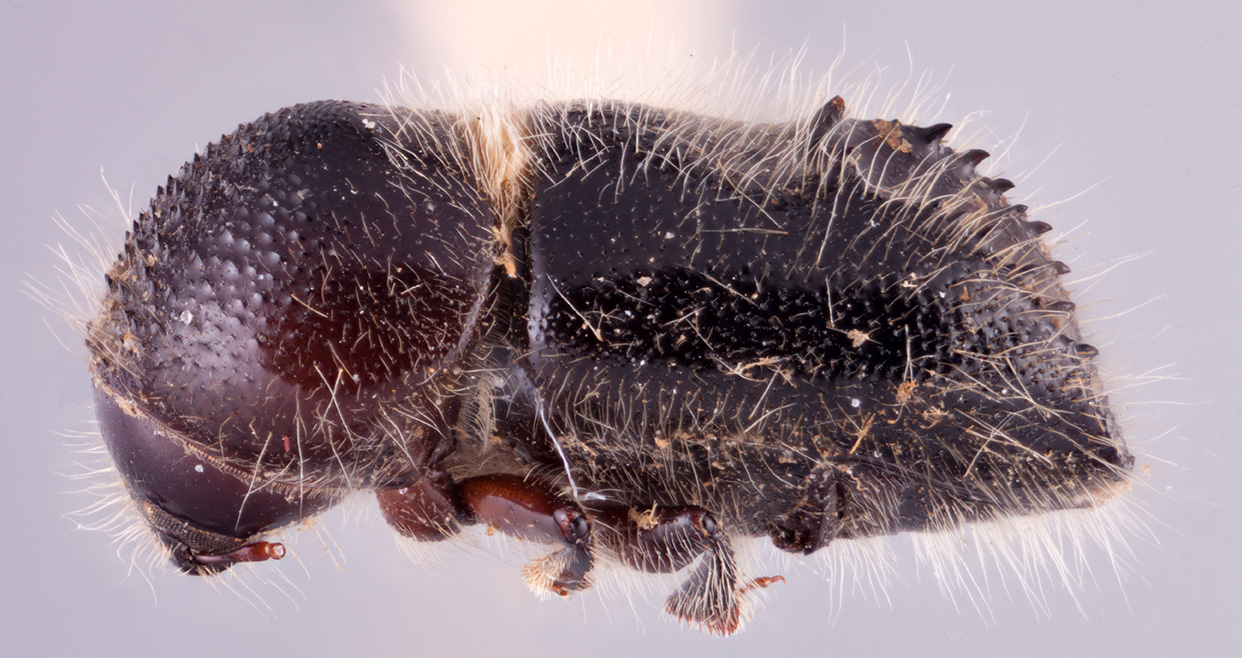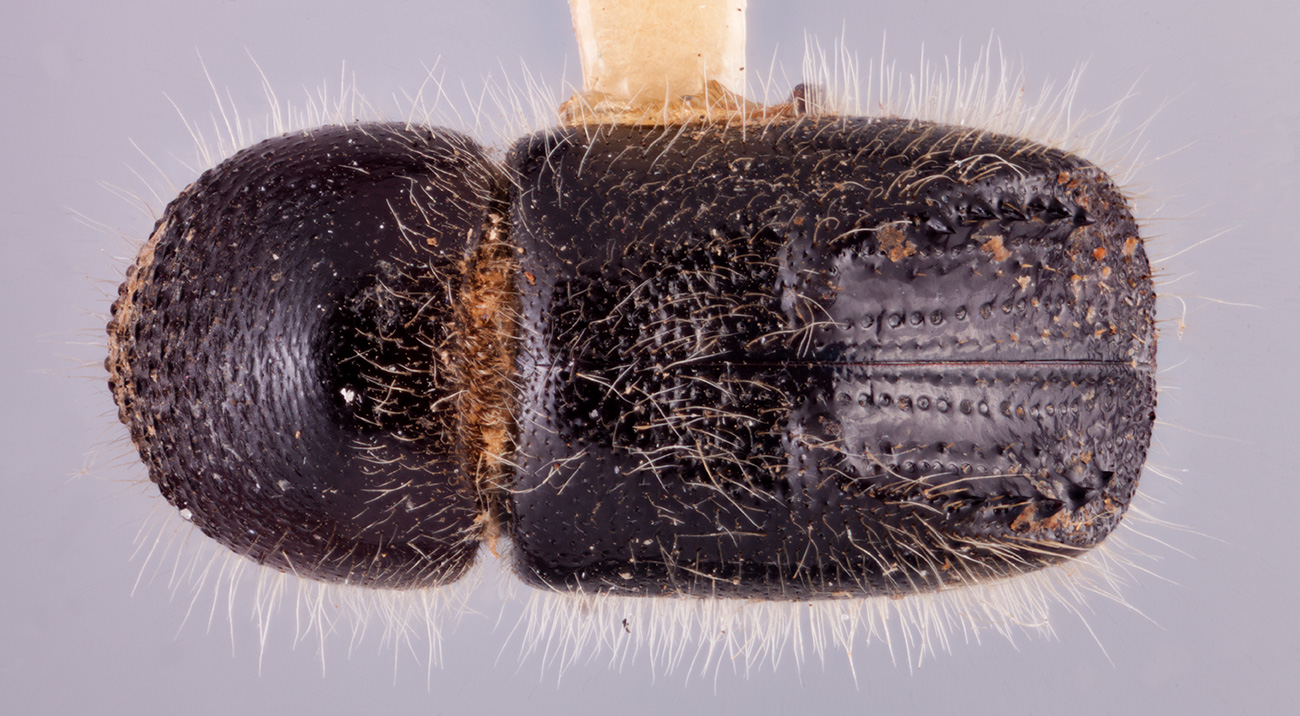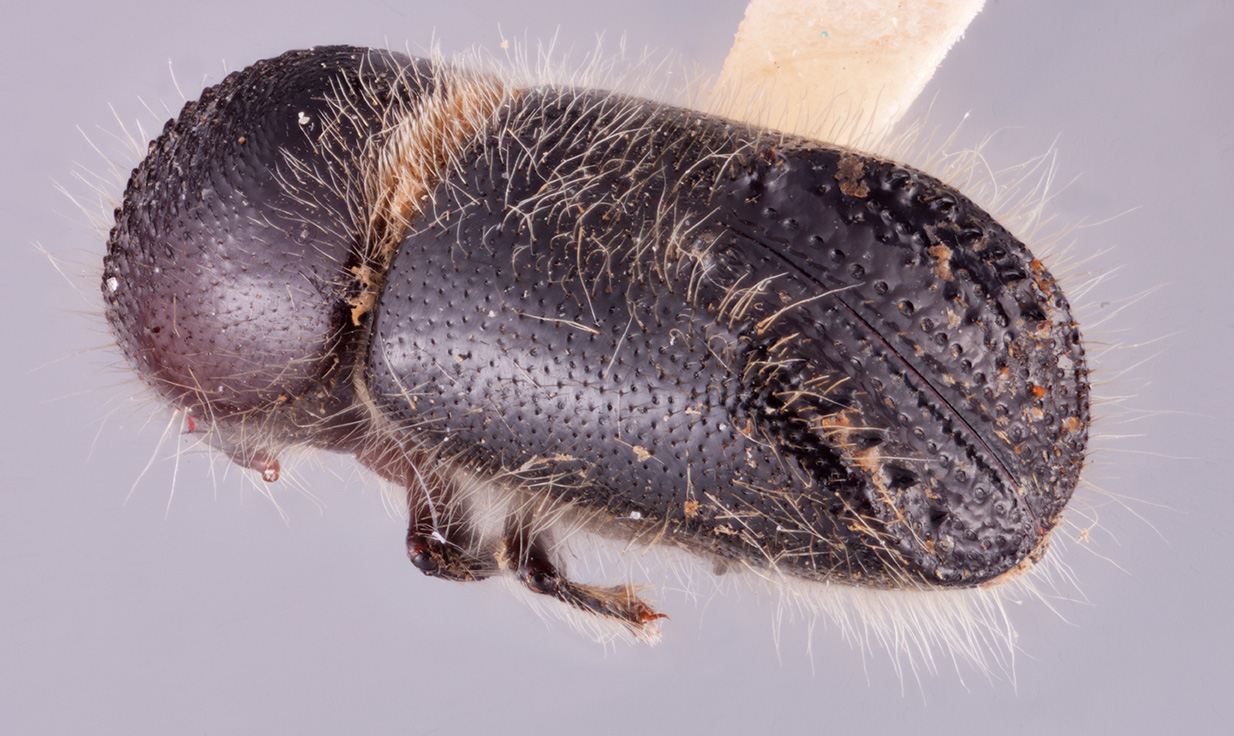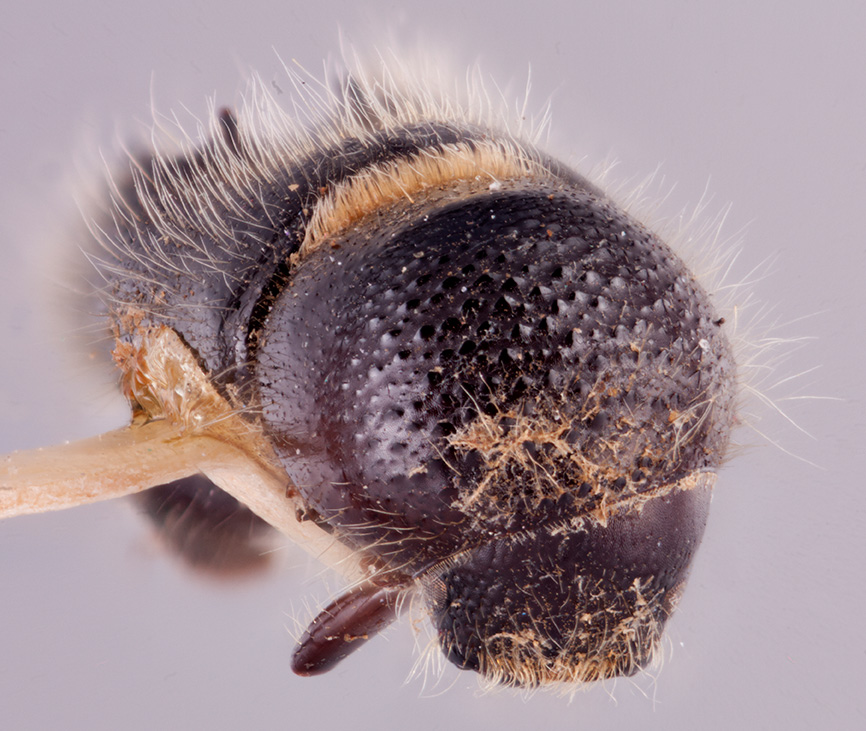Anisandrus klapperichi
|
Anisandrus klapperichi lateral; R.K. Osborn |
|
Anisandrus klapperichi dorsal; R.K. Osborn |
|
Anisandrus klapperichi declivity; R.K. Osborn |
|
Anisandrus klapperichi frontal; R.K. Osborn |
Taxonomic history
Xyleborus klapperichi Schedl, 1955b: 46.
Cnestus klapperichi (Schedl): Wood and Bright, 1992: 802.
Anisadnrus klapperichi (Schedl): Smith et al. 2020b: 99.
Diagnosis
5.4−5.6 mm long (mean = 5.53 mm; n = 4); 2.12−2.24 times as long as wide. This species can be distinguished by the dense the mesonotal mycangial tuftmycangial tuft:
tuft of setae that denotes the mycangia exterior opening
 that extends laterally from the scutellumscutellum:
that extends laterally from the scutellumscutellum:
a shield-like sclerotized plate located at the midpoint of the elytral base
to striaestria:
punctures in rows, which may or may not be impressed to make grooves 3; posterolateralposterolateral:
3; posterolateralposterolateral:
relating to end of the side part/portion
 margin of declivitydeclivity:
margin of declivitydeclivity:
downward slope of either the pronotum or elytra
 costate to interstriaeinterstria:
costate to interstriaeinterstria:
longitudinal spaces along the elytra between the striae, which is not as<br />
impressed and bear smaller punctures.
 5; elytralelytral:
5; elytralelytral:
pertaining to the elytra
discdisc:
the flat central upper surface of any body part (e.g. pronotum and elytra) with a deep transverse saddle-like depression; declivitaldeclivital:
with a deep transverse saddle-like depression; declivitaldeclivital:
pertaining to the elytral declivity
summit with large incurved spinespine:
an elongate projection of the exoskeleton that is longer than its basal width on interstriaeinterstria:
on interstriaeinterstria:
longitudinal spaces along the elytra between the striae, which is not as<br />
impressed and bear smaller punctures.
 2; declivitaldeclivital:
2; declivitaldeclivital:
pertaining to the elytral declivity
interstriae 3 with six additional unequally sized incurved spinesspine:
an elongate projection of the exoskeleton that is longer than its basal width on basalbase:
on basalbase:
point or edge closest to the body; opposite of apex half of declivitydeclivity:
half of declivitydeclivity:
downward slope of either the pronotum or elytra
 ; declivitydeclivity:
; declivitydeclivity:
downward slope of either the pronotum or elytra
 strongly sulcatesulcate:
strongly sulcatesulcate:
deeply furrowed or grooved
to interstriaeinterstria:
longitudinal spaces along the elytra between the striae, which is not as<br />
impressed and bear smaller punctures.
 3; strial punctures large, seriateseriate:
3; strial punctures large, seriateseriate:
arranged or occurring in rows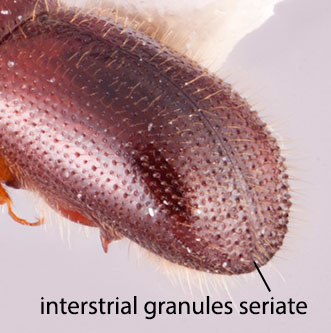 ; interstriaeinterstria:
; interstriaeinterstria:
longitudinal spaces along the elytra between the striae, which is not as<br />
impressed and bear smaller punctures.
 minutely uniseriately punctatepunctate:
minutely uniseriately punctatepunctate:
set with fine impressed points, appearing as pin pricks
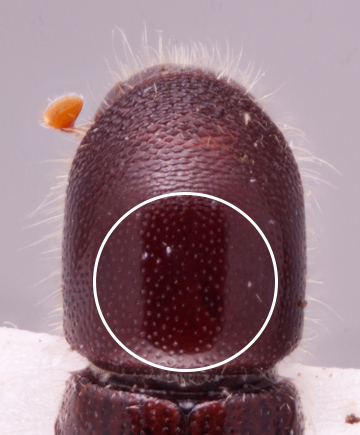 , setose, setaeseta:
, setose, setaeseta:
small hair-like or scale-like structure
semi-erect, short and thick; declivitydeclivity:
downward slope of either the pronotum or elytra
 shagreened, abundantly covered with long erecterect:
shagreened, abundantly covered with long erecterect:
pertaining to setae that have their apices directed away from the body and appear straight
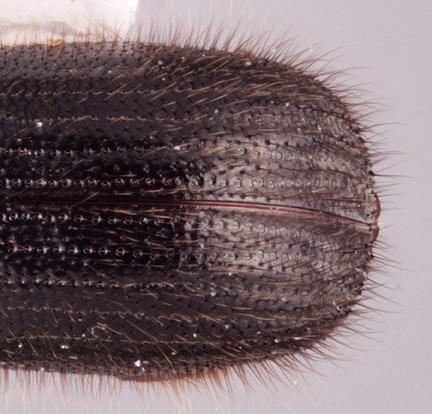 hair-like setae; and pronotalpronotal:
hair-like setae; and pronotalpronotal:
pertaining to the pronotum
asperitiesasperity:
small flat denticle-like structures frequently arranged in rows or confined to specific areas
 small, coarse, densely spaced.
small, coarse, densely spaced.
May be confused with
Anisandrus auratipilus, A. hera, A. percristatus, A. venustus, and A. xuannu
Distribution
China (Fujian)
Host plants
reported from Cinnamomum (Lauraceae) (Smith et al. 2020bSmith et al. 2020b:
Smith SM, Beaver RA, and Cognato AI. 2020b. A monograph of the Xyleborini (Coleoptera, Curculionidae, Scolytinae) of the Indochinese Peninsula (except Malaysia) and China. ZooKeys 983: 1-442. https://doi.org/10.3897/zookeys.983.52630)
DNA data
specimens not available for sequencing

